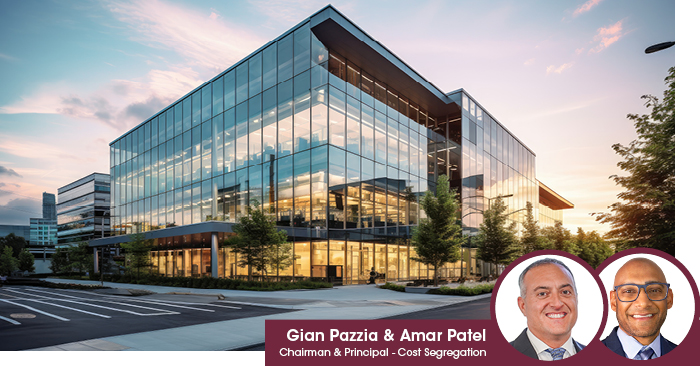Follow KBKG on Social Media
By Gian Pazzia | Chairman and Amar Patel | Principal, Cost Segregation
On July 4th, President Trump signed the “One Big Beautiful Bill Act” (OBBBA) into law, emphasizing a more pro-business tax environment, which is highlighted by restoring 100% bonus depreciation permanently for qualifying property placed into service after January 19, 2025.
KBKG Insight: Tax professionals need to pay close attention to placed in service dates for assets and buildings for 2024 and 2025 tax planning. Under prior law Bonus Depreciation began to phase down and now revert back in the middle of 2025 as follows: 2022 (100%), 2023 (80%), 2024 (60%), Jan 1, 2025 – Jan 19, 2025 (40%), Jan 20, 2025 and beyond (100%).
What is qualifying property / bonus depreciation?
Bonus depreciation, which is commonly referred to as additional first-year depreciation, is a favorable taxpayer incentive to encourage businesses to invest in qualifying property.
Qualifying property includes property used in a trade or business or for the production of income and falls within any of the following categories:
- Is MACRS property that has a recovery period of 20 years or less.
- Qualified improvement property. This includes improvements made to the interior of commercial (“nonresidential”) property after the property was initially placed in service for tax purposes by any taxpayer.
- Computer software.
- Qualified films, television shows, and live theatrical productions.
KBKG Insight: While bonus depreciation applies to many things found in a Cost Segregation study, remember that roofs and HVAC systems for nonresidential buildings, which are not bonus eligible, may still qualify for Section 179 expensing as long as they are completed in buildings that have already been placed in service.
Enhanced Cash Flow and ROI
Permanent 100% bonus depreciation allows businesses to immediately deduct the cost of qualifying property such as furniture, production equipment or land improvements in the year assets are placed into service, with the benefit of:
- Immediate tax savings which reduce current year tax liability
- Cash tax savings for reinvestment / debt reduction
- Improves IRR on capital projects
Conclusion
While the OBBBA brought a wave of powerful tax incentives, the restoration of 100% bonus depreciation remains a key part of tax planning, especially when coordinated with a cost segregation study.
Businesses should evaluate how permanent 100% bonus depreciation could affect capex timing decisions, entity structure optimization and interplay with other tax credits or strategic asset classifications.
KBKG’s team of experts remains at the forefront of evolving tax policy, providing clients with timely insights and strategic guidance. If you’d like to learn more about the OBBBA (Tax Changes and Summary Chart) and how the changes may affect your business, please contact a KBKG expert today for personalized support.
About the Author
Amar Patel | Principal – Cost Segregation
Amar spent over 15 years at a Big Four accounting firm, focusing on various specialty tax products, including Cost Recovery Solutions and Research & Development Tax Credits. With more than 20 years of practice, Amar has become an expert in Cost Segregation and Large Fixed Asset Depreciation reviews for purposes of identifying federal, state, and property tax benefits… Read More
Gian Pazzia | Chairman & Chief Strategy Officer
Gian P. Pazzia is currently the Chairman & Chief Strategy Officer at KBKG and oversees all strategic initiatives for the company. He has over 25 years of experience in the specialty tax industry. He is a recognized leader in the cost segregation field serving as a former President (2013-2015 term) of the American Society of Cost Segregation Professionals… Read More




